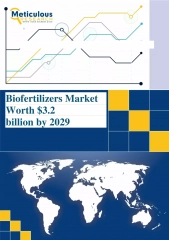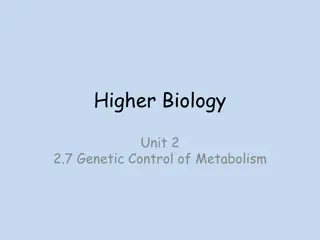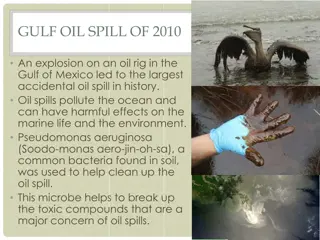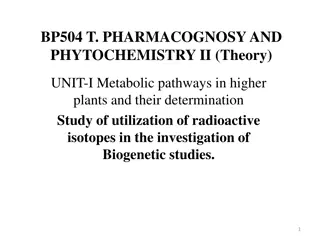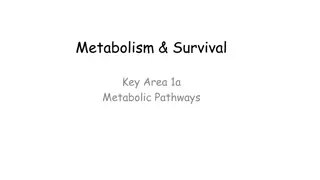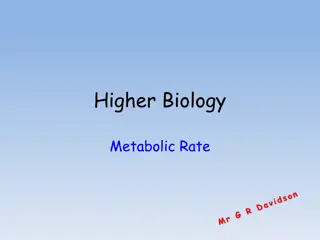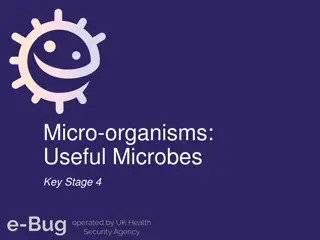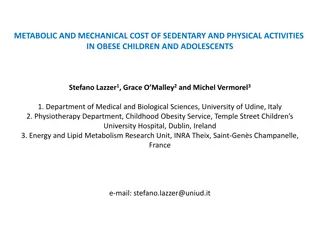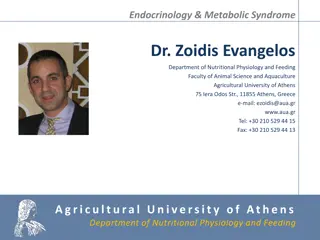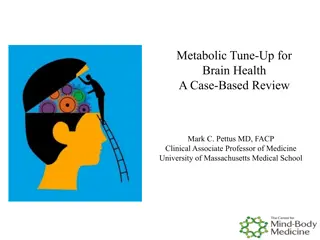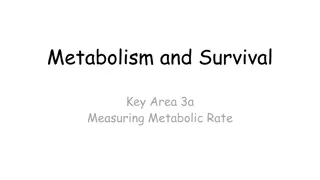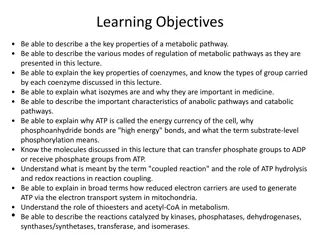Understanding Metabolic Pathways in Microbes
Metabolism in living organisms involves anabolism and catabolism, where anabolism generates essential biomolecules for growth using energy, while catabolism breaks down nutrients for energy release. Anabolic processes include synthesis of carbohydrates, lipids, proteins, nucleic acids, and other growth requirements. Catabolic processes involve glycolysis, PPP, EDP, TCA cycle, fermentation, glyoxylate cycle, lipid and protein hydrolysis. Adenosine Triphosphate (ATP) acts as the chief energy carrier molecule crucial for both anabolic and catabolic processes in cells.
Download Presentation

Please find below an Image/Link to download the presentation.
The content on the website is provided AS IS for your information and personal use only. It may not be sold, licensed, or shared on other websites without obtaining consent from the author. Download presentation by click this link. If you encounter any issues during the download, it is possible that the publisher has removed the file from their server.
E N D
Presentation Transcript
Metabolism in any organism includes two processes anabolism and catabolism. These two processes include all the biochemical reactions of living organisms. Anabolism: It is a process in which essential biomolecules required for growth are generated by the utilization of energy. The chief biomolecules required are carbon like glucose, ribose, glycerol, pyruvate, etc. Some of the biomolecules act as the central metabolic intermediates for all types of carbon and nitrogen compounds required for growth. Some microorganisms can themselves make all the essential organic compounds required for growth as in the case of autotrophs. Such organisms can be grown on simple and chemically defined media. On the other hand, some of the microorganisms which are unable to make most of the organic compounds from atmosphere are called fastidious organisms. These can only be grown on complex media with different growth factors.
For the biosynthesis, (anabolism) of different essential biomolecules, following anabolic processes take place in organisms: (a) Synthesis of carbohydrates like glucose, sucrose, cellulose, etc. (b) Synthesis of lipids, glycolipids, phospholipids, etc. (c) Synthesis of amino acids and protein. (d) Synthesis of nucleic acids. (e) Synthesis of other growth requirements like vitamins, hormones, etc.
Catabolism: All the processes in which the nutrients taken in the form of biomolecules as food are broken down (digested) to release energy are called catabolism. Catabolic processes also convert complex organic compounds, stored in the cells of microorganisms (like glycogen granules, polyphosphate, etc.) to simpler forms. Each and every organic compound whether it is carbohydrates, protein or fat, can be catabolized according to the requirement of organism. Similar to anabolism certain biomolecules act as link between catabolic and anabolic processes. Apart from these, ATP and NAD (P)H also act as a link between the two types of pathways. The chief catabolic processes involved m cell metabolisms are: (a) Glycolysis, (b) Pentose-phosphate pathway (PPP), (c) Entner doudoroff pathway (EDP), (d) Tricarboxylic acid cycle (TCA) (e) Fermentation, (f) Glyoxylate cycle, (g) Lipid hydrolysis, (h) Protein hydrolysis.
Adenosine Triphosphate (ATP): ATP is the chief energy carrier molecule in all type of organisms. ATP is required for the anabolic (generative) process of an organism by which organic macromolecules required for the growth are synthesized. ATP is formed by the catabolic (degradative) process in which macromolecules are broken down and energy is generated. The structure of ATP was first deduced by Lohman in 1930 and confirmed by Alexander Todd in 1948. ATP consists of an adenosine (adenine plus ribose sugar) and three phosphate groups. These three phosphate groups are bounded by high energy ester and anhydride bonds to adenosine unit and whenever one or two of these phosphate groups are removed from the ATP, large amount of energy is released. This energy is the instant energy utilized in the various anabolic processes of the cell. When the ATP is utilized in anabolic process, it is broken down to ADP or AMP releasing phosphate and energy. The ATP utilized in anabolic process is replenished by catabolic process by reversal reactions.
The trapping of chemical energy, released by the oxidative reactions of the cell, in the form of ATP, is called phosphorylation. There are three type of phosphorylation. (i) Photophosphorylation: It occurs in the presence of light by photosynthetic organisms mainly in the photoautotrophs and photo heterotrophs. In the photosynthetic cells, green pigment (chlorophyll) present in the chloroplast or bacteriochlorophylls present in the cell membrane of thylakoids, trap energy from solar radiations which become activated, releasing electrons. These electrons then pass through a series of acceptors. The energy thus released is trapped in the form of phosphate bonds in ATPs. Photophosphorylation is of two types. Cyclic photophosphorylation Non Cyclic photophosphorylation
Cyclic photophosphorylation: In this type of photophosphorylation electrons released from chlorophyll molecules (due to excitement by light energy) return back to the same chlorophyll molecules by the same route using electron carriers. Such pathway is cyclic in nature as the electrons pass, energy is released which is trapped in the form of ATP. Non-cyclic photophosphorylation: In this type of photophosphorylation electrons released from chlorophyll molecules do not return back to the same chlorophyll molecules, but instead are received by nicotinamide adenine dinucleotide phosphate (NADP+). From NADP electrons enter the electron transport chain whereby oxidative phosphorylation occurs and ATP is formed. The electrons released from chlorophyll molecules are replenished in the chlorophyll molecules by photolysis of water. 2 H2O 4 H+ + 4e + O2 Thus, we can see that oxygen is released in this type of photophosphorylation. Oxygen is toxic for anaerobes and, therefore, this type of phosphorylation is not found among anaerobic microorganisms
Oxidative Phosphorylation: In this type of phosphorylation, the electrons accepted by certain electron carriers like NAD+, NADP+ and FAD+ from various sources are passed into electron transport chain. Finally, electrons reach oxygen or some other inorganic molecule (like iron, nitrate, etc.), which act as final electron acceptors. The transfer of electrons from one carrier to another release energy, which is used to generate ATP from ADP. Oxidative phosphorylation occurs in the inner membrane of mitochondria in eukaryotes and in plasma membrane of prokaryotes. One molecule of NADPH generates three molecules of ATP, when it enters the electron transport chain for oxidative phosphorylation, however, one molecule of FADH generates only two molecules of ATP. This is due to the fact that FADH enters the ETC later compared to that of NADPH.
Substrate Level Phosphorylation: In substrate level phosphorylation, ATP is generated by the transfer of high energy phosphate bond from any other metabolic compound to ADP, for example
Nicotinamide Adenine Dinucleotide Phosphate (NADP+): Nicotinamide adenine dinucleotide phosphate (NADP) and Nicotinamide adenine dinucleotide (NAD) are the carriers of electrons (protons) in the cells. Therefore, NADP+ and NAD+ serve as the reducing power of the cells in the form of NADP/NADPH2 or an NAD/NADH2. Reduced substrate + NADP Oxidised substrate + NADPH2 Oxidised substrate + NADPH2 Reduced substrate + NADP NADP or NAD+ functions as coenzymes of a large number of oxidoreductase enzymes. They act as electron acceptors during enzymatic removal of hydrogen atoms from specific substrate molecules. Finally, reduced NADP or NAD i.e. NADPH2 or NADH2 release energy, ATP is generated. In catabolic reactions like respiration, NAD+/NADH act as electron donor, whereas NADP+/NADPH act as electron donor in anabolic reactions. Structurally, NAD consists of a nicotinamide moiety (the protein which undergoes reversible reduction), two adenine nucleotide. In NADP, a phosphate group is esterified to the second adenine nucleotide at 2-hydroxyl grp
Metabolic Pathway # 1. Glycolysis: Glycolysis (glyco-sugar of sweet, lysis-breakdown) is the initial phase of metabolism during which the organic molecule glucose and other sugar are partially oxidized to smaller molecules e.g. pyruvate usually with the generation of some ATP and reduced coenzymes. Microorganisms employ several metabolic pathways to catabolize glucose and other sugars. There are three important routes of glucose conversion to pyruvate such as Glycolysis or Embden-Myerhof pathway (BMP) pathway Pentose phosphate pathway Entner-Doudroff pathway Glycolysis is the most important type of mechanism by which organisms obtain energy from organic compounds in absence of molecular oxygen. As it occurs in the absence of oxygen, therefore, it is also called anaerobic fermentation.
Since living organisms arose in the environment lacking oxygen, anaerobic fermentation was the only method to obtain energy. However, glycolysis or anaerobic fermentation is present in both aerobic and anaerobic organisms. Most higher organisms have retained the glycolytic pathway of degradation i.e. glucose to pyruvic acid as a preparatory pathway for complete aerobic catabolism of glucose. Glycolysis also serves as an emergency mechanism in anaerobic organisms to produce energy in the absence of oxygen.
EMP Pathways: In case of aerobic catabolic carbohydrate metabolism (aerobic respiration), some bacteria such as E. coli, Azotobacter spp., Bacillus spp, etc. exhibit EMP pathway whereas, ED pathway (phosphorylated) is followed by the species of Alcaligenes, Rhizobium, Xanthomonas, etc. The non-phosphorylated ED pathway occurs in archaea (Pyrococcus spp., Thermoplasma spp, etc.). It is interesting to note that no archaeobacteria uses EMP pathway. EMP pathway in bacteria initiated by using the phosphoenol pyruvate phosphotransferase system (PEP: PTS) that converts glucose to glucose 6-phosphate during nutrient transport across the cell membrane.
The overall balance sheet of glycolysis is given below: Glucose + 2ADP + 2Pi + 2NAD+ Pyruvate + 4 ATP + 2NADH + 2H+ In anaerobic organisms pyruvate is further converted to lactate or other organic compounds like alcohol, etc., after using NADH and H+ formed during glycolysis: Pyruvate + NADH + H+ Lactate + NAD+ In aerobes the pyruvate is converted to acetyl CoA as a preparatory step for entrance into tricarboxylic acid cycle, for complete oxidation of glucose. Pyruvate + NAD++ CoA Acetyl CoA + NADH + H+ + CO2
Glycolysis is carried out by the help of ten enzymes for ten reactions of the glycolytic pathway. These enzymes are present in the soluble portion of the cytoplasm. All the intermediates of the glycolytic pathway are phosphorylated compounds. The most important use of phosphate groups is in the production of ATP from ADP and phosphate. The complete reactions of glycolytic pathway can be divided into two stages. In the first stage, ATP is utilized and glucose is converted into two molecules of three carbon compounds, glyceraldehyde 3-phosphate and dihydroxy acetone phosphate. The glyceraldehyde 3-phosphate is converted into pyruvic acid resulting in a net synthesis of two molecules of ATP.
Apart from glucose, other types of sugar (monosaccharides, disaccharides, polysaccharides) can also enter the glycolytic pathway. Polysaccharides e.g. Glycogen: Disaccharides e.g. Sucrose:
Homo-saccharides: e.g. Fructose Fructose can enter the glycolysis by changing to glyceraldehyde 3-phosphate. https://cdn.biologydiscussion.com/wp-content/uploads/2016/11/clip_image006_thumb-139.jpg
Alternate EMP Pathway-Methyl Glyoxal Pathway: The methyl glyoxal pathway is an alternate of the EMP pathway. It operates in the presence of low concentration of phosphate in bacteria like E. coli, Clostridium spp., Pseudomonas spp. etc. In this pathway, dihydroxyacetone so formed converted to methyl glyoxal which later on gives rise to pyruvate. Hence, there is complete absence of the phosphorylation step in which glyceraldehyde 3-phosphate forms 1, 3-bis-phospho- glycerate. The methyl glyoxal pathway consumes O2 and ATP and no ATP is generated in this pathway.
Entner-Doudoroff Pathway: Apart from glycolysis, Entner-Doudoroff pathway is another pathway for oxidation of glucose to pyruvic acid. This pathway is found in some Gram-negative bacteria like Rhizobium, Agrobacterium and Pseudomonas and is absent in Gram-positive bacteria. In this pathway each molecule of glucose, forms two molecules of NADPH and one molecule of ATP.
EntnerDoudoroff pathway occurs only in prokaryotes and it uses 6-phosphogluconate dehydratase and 2-keto-3-deoxyphosphogluconate aldolase to create pyruvate from glucose. The Entner Doudoroff pathway has a net yield of 1 ATP for every glucose molecule processed, as well as 1 NADH and 1 NADPH. By comparison, glycolysis has a net yield of 2 ATP and 2 NADH for every one glucose molecule processed. There are a few bacteria that substitute classic glycolysis with the Entner-Doudoroff pathway. They may lack enzymes essential for glycolysis, such as phosphofructokinase-1. This pathway is generally found in Pseudomonas, Rhizobium, Azotobacter, Agrobacterium, and a few other Gram-negative genera. Very few Gram-positive bacteria have this pathway, with Enterococcus faecalis being a rare exception. Most organisms that use the pathway are aerobes due to the low ATP yield per glucose such as Pseudomonas, a genus of Gram-negative bacteria, and Azotobacter, a genus of Gram-negative bacteria.
In this pathway glucose 6-phosphate is oxidized to 6-phosphogluconate, then converted to 2- keto-3-deoxy-6-phosphoglucose (kDPG) cleaved using enzyme to give rise glyceraldehyde s 3- phosphate and pyruvate directly without generation of ATP. The catabolism of glucose results in production of only one ATP molecule whereas in EMP pathway, two ATP molecules are produced. This seems that EMP pathway more efficient than that of ED pathway. Partially non-phosphorylated ED pathway is involved in some bacteria such as Clostridium spp. Achromobacter spp., Alcaligens spp. and Archaea (Halobacterium spp.) In this case, intermediate product formed prior to kDPG is non-phosphorylated, and phosphogluconate is dehydrated to give rise kDPG, which gives to pyruvate. In later steps, the reactions of ED pathway are followed. This pathway is also found in other bacteria such as Pseudomonas aeruginosa, Azotobacter, and Enterococcus faecalis, and an anaerobic bacterium Zymomonas mobilis.


